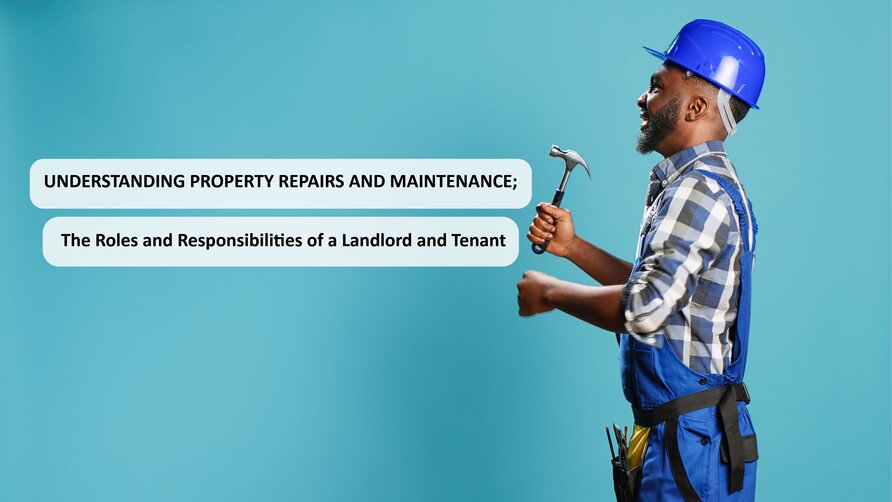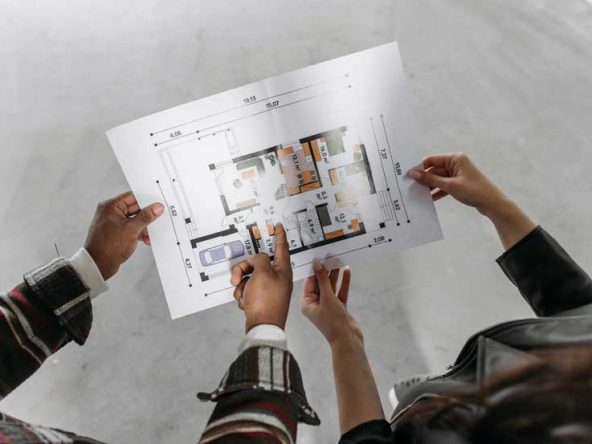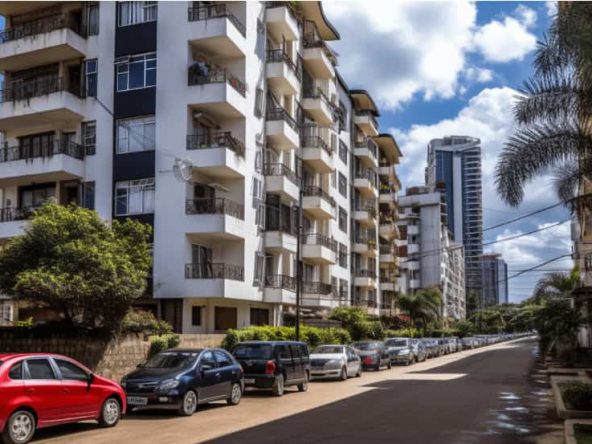As a rule of thumb both landlords and tenants have the responsibility for property maintenance and repairs in a building. Generally, a tenancy, lease or license agreement will outline the specific responsibilities of each party in relation to repairs and maintenance of the building.
What does the Law provide?
Section 65(1)(c) of the Land Act, 2012 provides that the landlord has the implied obligation to keep the structure of a building, roof, main drainage system, and common areas in a proper state of repair.
On the other hand, section 66 (1) of the Land Act, 2012 provides that a tenant has the implied obligation to keep the building in a reasonable state of repair. At the expiration of the term of the tenancy, a tenant is required to yield up the premise in the same condition as it was at the commencement of the term. However, the tenant shall not be responsible for damage as a result of reasonable wear and tear, accidents not attributable to the negligence of the lessee, and acts of God such as fire, flooding, earthquake, or other natural disasters.
What are the Landlord’s Responsibilities?
- Structural Repairs
Major structural repairs, such as those relating to the foundation, floors, exterior walls, support columns of a building, roof, windows, and doors, are the landlord’s responsibility. Therefore, in cases of a leaky roof or cracks in the walls of a building, the landlord will be responsible to make the necessary repairs.
- Health and Safety
It is the landlord’s obligation to ensure that the leased or rented house is habitable and in good condition for living throughout the duration of the lease/tenancy. The premise should be safe, sanitary, properly constructed structure and free from hazardous waste and materials such as faulty wiring, gas leaks or molding on walls.
- Common Areas
A landlord is responsible for the management, maintenance and repair of common areas such as staircases, hallways, elevators, and entryways. Landlords typically collect service charge from tenants and use the amount to cater for the costs associated with the maintenance and repair of common areas.
- Any pre-existing issues
Before a tenant moves in, the landlord is responsible for addressing any pre-existing problems such as damages as a result of wear or tear to walls, fixtures or electrical appliances in the premise. It is prudent for a tenant to have a joint inspection of the exterior and interior of a house and document any issues before moving in.
- Normal wear and tear
Normal wear and tear occurring to a property is generally considered a landlord’s responsibility. Landlords are expected to account for the gradual deterioration that occurs in their properties over time due to normal use and aging. This includes minor scuffs on walls, worn-out carpets, and fading paint, which are expected to happen with regular occupancy.
- Acts of God
In the event of repairs being required due to Acts of God or natural disasters, the responsibility for such repairs lies with the landlord. Acts of God encompass unforeseeable events beyond human control, such as earthquakes, floods, hurricanes, or other natural calamities. The landlord will be liable for rectifying any damage caused by these events to ensure the property is restored to its proper condition.
What are the Tenant’s Responsibilities
- Negligent Acts (Tenant-Caused Damage)
A tenant assumes full responsibility for all damage occurring negligently within the premises or caused by the tenant’s or their guests’ negligence. You will be required to inform the landlord and undertake the repairs in a work-like manner and at their sole cost.
Further, a tenant will be liable for undertaking any unauthorized repair service calls without the landlord’s approval that result in damage to the premises.
- Outdoor maintenance
If the rental property includes a yard or outdoor space, tenants will be tasked with the responsibility of maintaining and keeping the landscaping in good condition. This includes various tasks such as lawn mowing, watering, trimming bushes, fertilizing, and overall upkeep of the outdoor areas.
- Repairs before moving out
On termination of the tenancy, the tenant is required to yield up the property in the same condition as it was at the beginning of the tenancy. If the tenant caused any damage to the apartment, furniture, or fittings during the tenancy, the landlord has the right to retain the deposit and use it for repairs or replacements as needed.
Overall, by landlords and tenants fulfilling their respective obligations, they can create a harmonious landlord-tenant relationship while ensuring the property is well maintained throughout the tenancy. It is essential for both parties to communicate effectively and address any repair or maintenance issues promptly to ensure a pleasant and satisfactory rental experience for each party involved.
Written by Cynthia Kitolo
Legal Officer & Advocate of the High Court of Kenya




